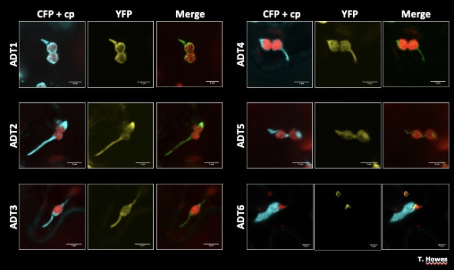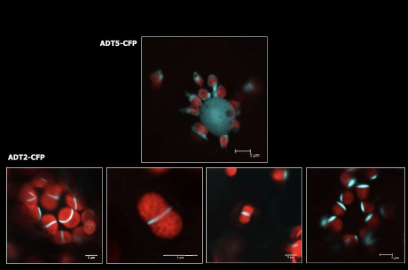


Figure 1: Subcellular localization of Arabidopsis ADTs

Figure 2: The moonlighting roles of ADTs: ADT2 forms rings around the chloroplast and is required for chloroplast division; ADT5 localizes to the nucleus and has a proposed role in transcriptional regulation.
I have always been fascinated by the complexity of regulatory processes in organisms. It is amazing to see how organisms are able to sense small changes in the environment or in their own metabolism, and to respond by changing the expression of select genes. This can lead to tissue- and/or cell-specific responses such as those involved in protein reallocation and complex formation, or changes in activity spectra of enzymes. The complexity of these events is often increased as many reactions involve multi gene families encoding proteins that have highly similar but not identical sequences that mediate and fine-tune cellular responses.
To study regulatory events in plants we chose as a model system the arogenate dehydratase family (ADTs) in Arabidopsis thaliana. In Arabidopsis there are six members in the ADT family and these enzymes catalyze the last step in the synthesis of phenylalanine. We believe that these enzymes are catalyzing a key step in the production of phenylalanine and thereby co-ordinating the Shikimate pathway and the many branches of phenylpropanoid biosynthesis. We are interested to understand and characterizing as many of the molecular aspects which relate to this gene family inArabidopsisthaliana. The questions we are asking can be at times as simple as: why does Arabidopsisneed six versions of this enzyme? How do these enzymes differ? Are there post-translational modifications? Do these different members of the ADT family contribute to different protein complexes? Are the enzymes or the encoding genes regulated differentially in response to different internal and environmental cues? We already have found some answers. All six ADTs code for proteins which have similar but not identical enzymatic functions. All six ADTs are expressed in all tissues and developmental stages analyzed, but not at the same levels. The encoded proteins have unique subcellular localization patterns. And just to make it even more fun, the six ADTs form homo- and hetero dimers. We still need to investigate if these dimers are formed in all parts of the plant, if they result in unique compositions of protein complexes and what functional consequences these dimer and/or complex formations may have.
Associate Professor,
Department of Biology
Office: Western Science Center 319
Email: skohalmi@uwo.ca
Phone: (519) 661-2111 x 86485
Fax: 519 661-3935